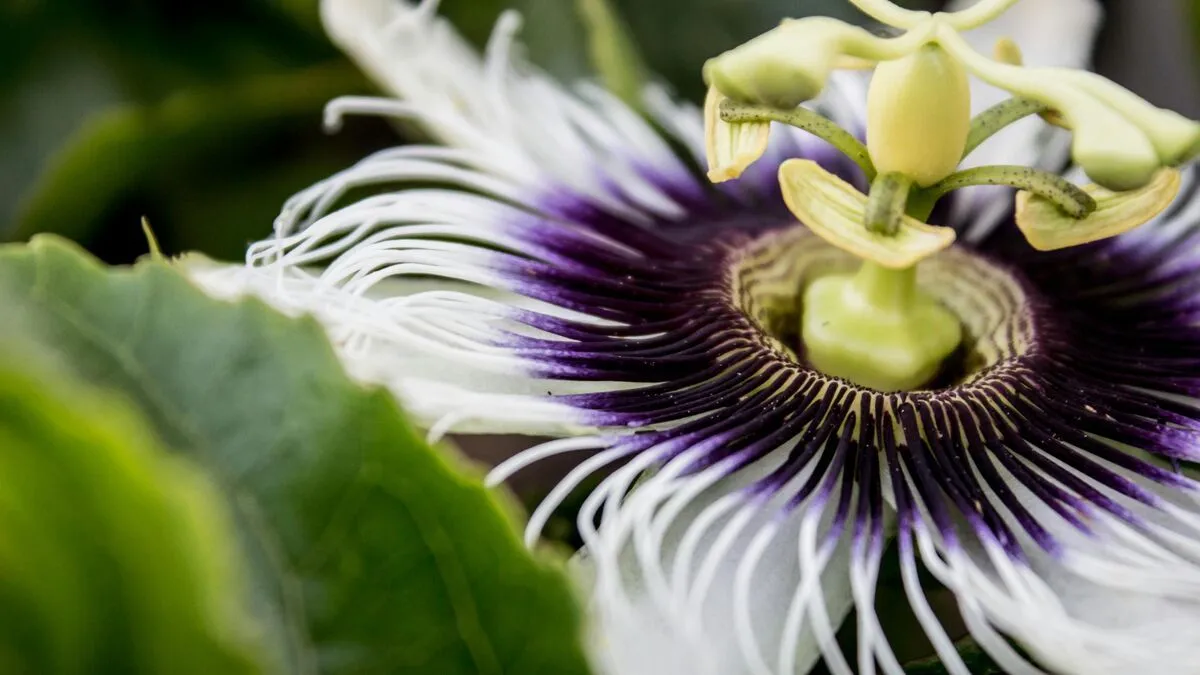
A Guide to 5 Delicious Passiflora Fruits You Can Grow at Home
When you see the stunningly intricate, almost alien-like bloom of a passion flower, you might think the flower is the main event. But for many gardeners and fruit lovers, the real treasure comes next: the wonderfully diverse and flavorful Passiflora fruits.
From the common passion fruit you see in stores to hard-to-find tropical delights, the genus Passiflora offers a surprising variety of tastes, sizes, and colors. Ready to grow your own? This guide will introduce you to five incredible types of Passiflora fruits and the zones where you can plant them.
1. The Classic: Purple Passion Fruit (Passiflora edulis)
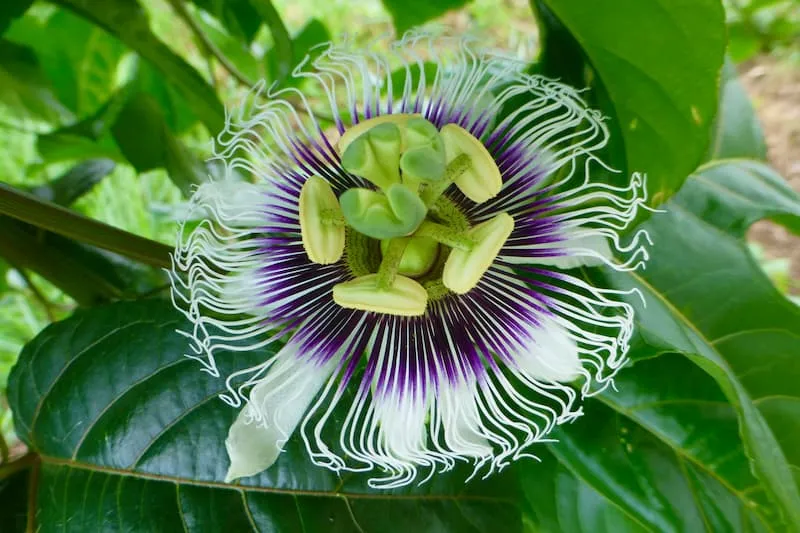
This is the fruit that most people picture when they hear “passion fruit.” The vine produces a beautiful white and purple flower, which gives way to a small, round fruit that ripens from green to a deep, wrinkly purple.
- The Fruit: Inside the tough rind is a bright orange, jelly-like pulp filled with crunchy, edible seeds. The flavor is a perfect balance of sweet and tart, with a powerfully aromatic, tropical taste. It’s fantastic eaten fresh with a spoon or used in juices, desserts, and cocktails.
- Planting Zone: This subtropical vine thrives in USDA Zones 9-11. It’s sensitive to frost and needs a warm, protected location to produce fruit reliably.
2. The Tropical Staple: Yellow Passion Fruit / Lilikoi (Passiflora edulis f. flavicarpa)
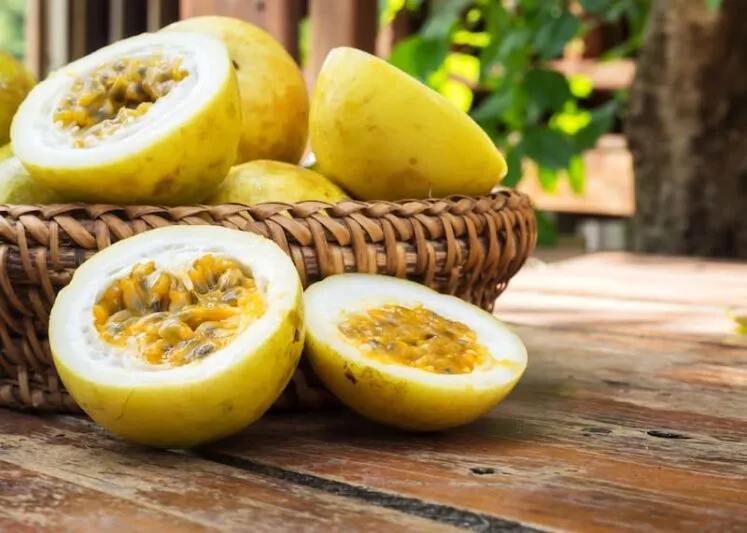
A close relative of the purple variety, Yellow Passion Fruit—often called Lilikoi in Hawaii—is another major commercial type of Passiflora fruit. The vine is typically more vigorous, and the flowers are slightly larger.
- The Fruit: The fruit is larger than its purple cousin, with smooth, yellow skin when ripe. The pulp is generally more acidic and intensely aromatic, making it a favorite for juices, syrups, and baking where a strong passion fruit flavor is desired.
- Planting Zone: Being slightly more tropical, it does best in USDA Zones 10-12. It requires high humidity and heat to flourish. Many yellow varieties also require cross-pollination with another vine to set fruit.
3. The Cold-Hardy Native: Maypop (Passiflora incarnata)
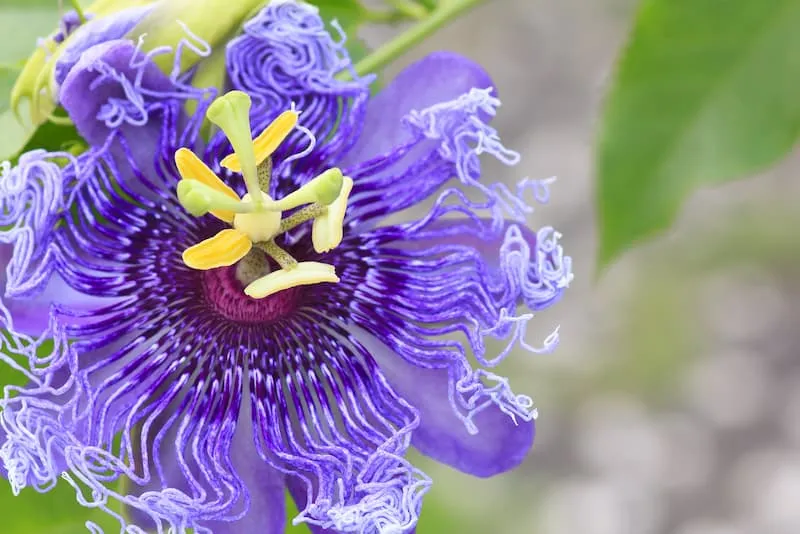
If you live in a colder climate, this is the passion flower for you! Native to the southeastern United States, the Maypop is a resilient perennial vine. It dies back to the ground in winter and “pops” back up in late spring, hence the name. Its fringed, lavender flower is breathtaking.
- The Fruit: The Maypop produces an oval, greenish-yellow fruit about the size of a chicken egg. The pulp is sweet and has a unique, almost grape-like or guava-like flavor. While it has less pulp than its tropical cousins, the flavor is delightful.
- Planting Zone: This is the most cold-hardy of all the fruiting passion flowers, thriving in USDA Zones 5-9. It’s a must-have for anyone wanting to grow Passiflora fruits outside of the subtropics.
4. The Gentle Giant: Giant Granadilla (Passiflora quadrangularis)
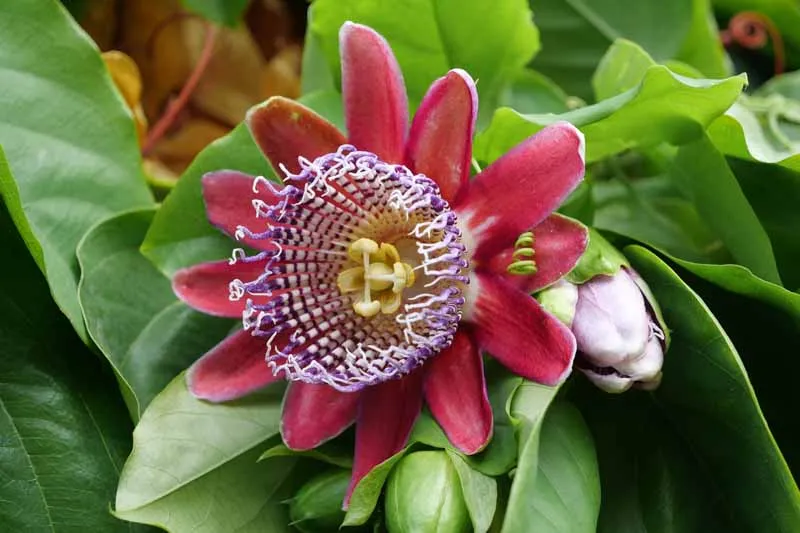
For a truly impressive harvest, look no further than the Giant Granadilla. This tropical vine produces the largest of all Passiflora fruits, supported by a robust vine with unique square-shaped stems.
- The Fruit: The fruit is enormous, resembling a football-sized melon that can weigh several pounds. The flesh is mild and sweet, with a watery texture that’s incredibly refreshing. Uniquely, the thick green rind is also edible when cooked and is often treated like a vegetable.
- Planting Zone: This is a true tropical plant and needs the consistent warmth and humidity of USDA Zones 10-12. It is extremely sensitive to cold and will not survive a frost.
5. The Sweet Treat: Sweet Granadilla (Passiflora ligularis)
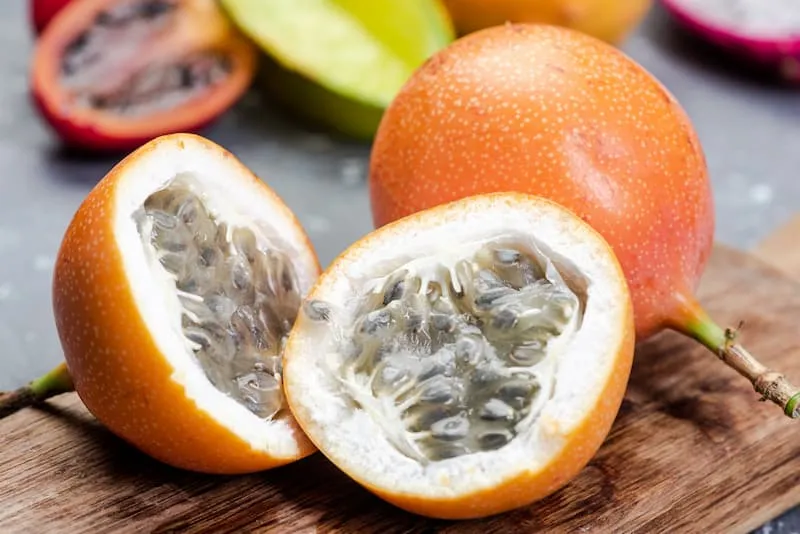
If you find a standard passion fruit a bit too tart, the Sweet Granadilla is your perfect match. Revered in Mexico and South America, it is prized for its lack of acidity.
- The Fruit: This fruit has a hard, brittle orange shell that cracks open easily. Inside, you’ll find translucent, greyish pulp with a wonderfully sweet, floral flavor reminiscent of grapes and honeydew. It’s perfect for eating fresh—no sugar needed!
- Planting Zone: It grows best in cool, high-altitude tropical climates, making it a good fit for specific microclimates in USDA Zones 9-11 that don’t experience extreme heat or frost.
Ready to Plant? What to Know Before You Grow
- All Passiflora Need a Trellis: These are vigorous vines that need something sturdy to climb on, like a fence, arbor, or strong trellis.
- Check Your Zone: The most important factor for success is choosing a variety suited to your USDA Hardiness Zone.
- Sun is Key: For the best flower and fruit production, plant your vine in a location that receives at least 6-8 hours of direct sunlight per day.
- Pollination: While some varieties are self-fertile, many produce more fruit when cross-pollinated with another genetically different vine. If you have space, planting two is always a good idea.
Related Articles
Continue exploring with these related gardening articles.
